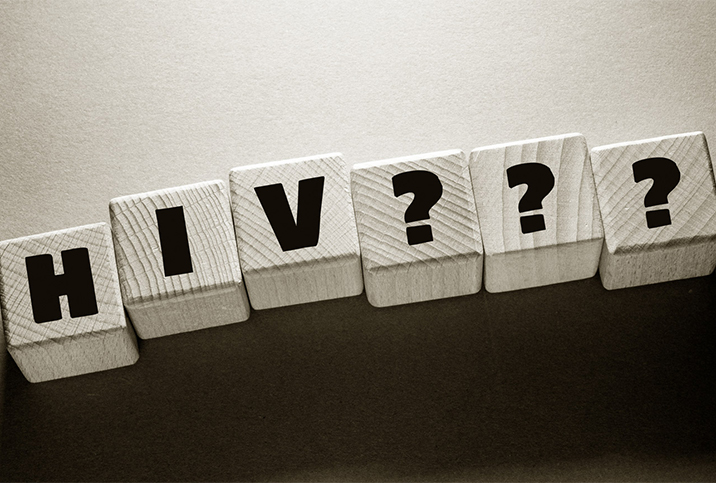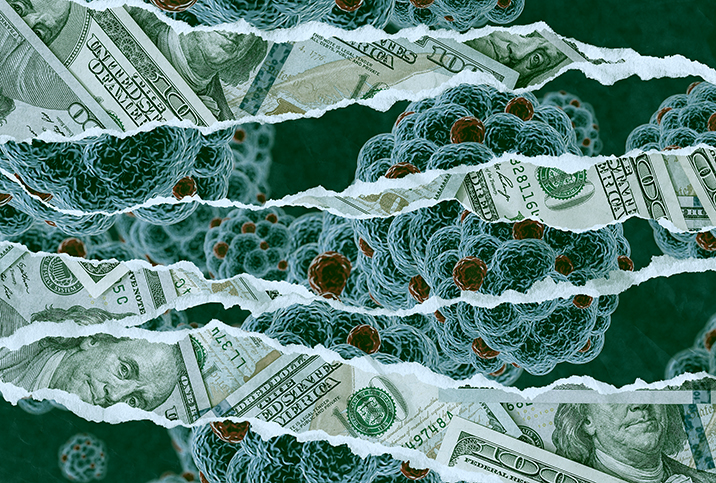HIV/AIDS: The Basics You Need to Know

HIV stands for human immunodeficiency virus and AIDS stands for acquired immunodeficiency syndrome. HIV, if left untreated, can lead to AIDS, the final stage of an HIV infection.
As of 2018, an estimated 700,000 people have died of HIV/AIDS in the United States since June 5, 1981, when it was first detected in California. About 13,000 people with AIDS die each year.
"HIV/AIDS is still an epidemic, and transmission is still occurring 42 years since the first patient was seen with HIV in 1981," said Militza Suarez-Favetta, M.D., an infectious disease specialist and a representative of the Pennsylvania Take Control HIV Community.
A diagnosis of HIV or AIDS in 2023 is not the same as it once was. However, despite enormous progress in medical treatment over recent years, there are still a lot of myths and misinformation about both of these conditions.
"With the advances in medical care and treatment—particularly with one-tablet regimens and new injectable antiretroviral medications—HIV is no longer a death sentence but a manageable long-term disease, like diabetes," Suarez-Favetta explained.
Most people with HIV will not develop any AIDS-related illnesses if they receive an early diagnosis. Indeed, most people diagnosed with HIV can now live a near-normal life span.
What is HIV/AIDS?
As the name suggests, human immunodeficiency virus attacks and damages the cells in your immune system, weakening your ability to fight everyday infections and illnesses.
"HIV is the initial infection of the virus which, if left untreated, develops into AIDS," Suarez-Favetta explained.
AIDS can occur when HIV has severely damaged your immune system, and you can become very ill from severe infections and cancers at this stage.
"When HIV progresses to AIDS, the body's immune system becomes so compromised that it can no longer fight off normal or common diseases, viruses and other illnesses," she added.
However, it's vital to remember that if diagnosed early with quick initiation of treatment, most people never reach the stage of AIDS (also known as late-stage or stage 3 HIV).
How is it spread?
HIV lives in blood and certain other bodily fluids. To contract the virus, blood or bodily fluid infected with HIV must enter your own bloodstream. However, HIV isn't like a cold, in that it's not easy to pass to another person.
Suarez-Favetta explained HIV is spread primarily through bodily fluids such as blood, semen, vaginal fluids and breast milk. The lining inside the anus is another area with fluid that can transmit HIV. There isn't enough of the virus in saliva, urine or sweat to infect another person.
"At the beginning of the epidemic, people were afraid to even be in the same room as someone with HIV. And, yes, some of these fears still exist today," she noted. "But you can only contract HIV from bodily fluids and not common utensils, toilet seats or other items handled or utilized by someone living with HIV."
You can be infected with HIV by:
- Sharing needles or injection equipment with other people and using them to inject into your own bloodstream
- Having unprotected sex and being infected via the thin lining on or inside the anus, vagina or genitals
- Having infected bodily fluids on open cuts and sores on your skin
- Having infected bodily fluids on the thin lining of the mouth and eyes
You cannot get HIV through kissing, spitting, biting, sneezing or sharing utensils.
"Sexual transmission and sharing needles remain the greatest risk for acquiring HIV," Suarez-Favetta advised.
Risks and causes
Anyone can be infected by HIV regardless of age, ethnicity, gender or geographic location. But some people are more at risk than others.
You are at higher risk of contracting HIV if you:
- Are a baby born to a parent with untreated HIV
- Have unprotected sex with a partner who injects drugs and shares injection equipment
- Inject drugs and share injection equipment
- Use drugs to enhance sex
- Have a partner with HIV
- Are a man who has unprotected sex with men
- Are a woman who has unprotected sex with men who have sex with men
- Share sex toys with someone who has HIV
- Live in an area with high HIV rates or your partner lives in an area with increased rates of HIV
- Have been raped or sexually assaulted
- Have a history of sexually transmitted infections (STIs), in particular, hepatitis B and C
- Had a blood transfusion or transplant in a country that doesn't strictly screen for HIV
- Are a healthcare worker who's at risk of a needle injury (very low risk)
If you feel you are at risk of contracting HIV, Suarez-Favetta said it's essential to get tested.
"Early diagnosis is the key to living a long, healthy life," she added. "If you have risk factors such as unprotected sex, injecting drugs or other risky behaviors, get tested regularly. Early treatment is the key to success."
The three stages of HIV/AIDS
HIV is broken down into three stages. Without treatment, the virus can progress and worsen across these stages. However, with treatment, you can slow and even prevent the progression of the infection.
According to the Centers for Disease Control and Prevention (CDC), the three stages of HIV are:
Stage 1
Also known as acute HIV infection, this stage has the following characteristics:
- High levels of HIV in the blood
- Very contagious
- May not present any symptoms at first
- Flu-like symptoms, such as fever, chills, rash, sore throat, night sweats, muscle aches, fatigue, swollen glands and mouth ulcers, usually occur within two to four weeks of infection.
Stage 2
Also known as chronic HIV infection, asymptomatic HIV infection or clinical latency, this stage has the following characteristics:
- HIV remains active in the body
- May not present symptoms
- With treatment, this stage may never progress to stage 3 for some people.
- Without treatment, stage 2 can last 10 to 15 years on average.
- If your viral load is detectable, you can transmit HIV during this stage.
- If taking HIV medication and you have an undetectable viral load, you can live a long and healthy life and will not transmit HIV to your HIV-negative partners through sex.
Stage 3
This stage, AIDS, is the most severe stage of HIV and includes the following characteristics:
- Without treatment, HIV continues to attack the immune system and develops into AIDS.
- Severe infections and diseases, such as pneumonia, tuberculosis and cancer, are much more likely.
- Symptoms might include rapid weight loss, extreme fatigue, prolonged swollen glands, mouth/anus/genital ulcers, bowel problems, lung infections and neurological disorders.
- The typical survival rate once a person reaches the AIDS stage is three years.
Facts and stats
Here are five important statistics about HIV and AIDS:
- At the end of 2019, the CDC estimated that 1,189,700 people in the United States ages 13 and older had HIV. This includes an estimated 158,500 people with undiagnosed HIV.
- The age bracket with the highest number of HIV diagnoses is 25 to 34.
- The highest rates of new diagnoses continue to occur in the Southern states of the U.S.
- In 2019, the highest rate of HIV incidence in the U.S. was in Black/African American people, followed by Hispanic/Latino people and people of multiple races.
- New HIV infections fell by 8 percent from 2015 to 2019.
Despite the numbers, the critical takeaway is that HIV is preventable and treatable.
"HIV is not a death sentence, and once an undetectable viral load is achieved, you can continue a normal, healthy life, including intimate relationships," Suarez-Favetta said.
Editor's note: This report is part 1 of a five-piece introduction and continuing update focusing on HIV/AIDS. Check out the other parts of this series:
- HIV/AIDS: The Basics You Need to Know
- HIV/AIDS: Signs, Symptoms and Diagnosis
- HIV/AIDS: Treatment and Your Sexual Health
- HIV/AIDS: Living and Loving Your Best Life
- HIV/AIDS: Back to the Future


















